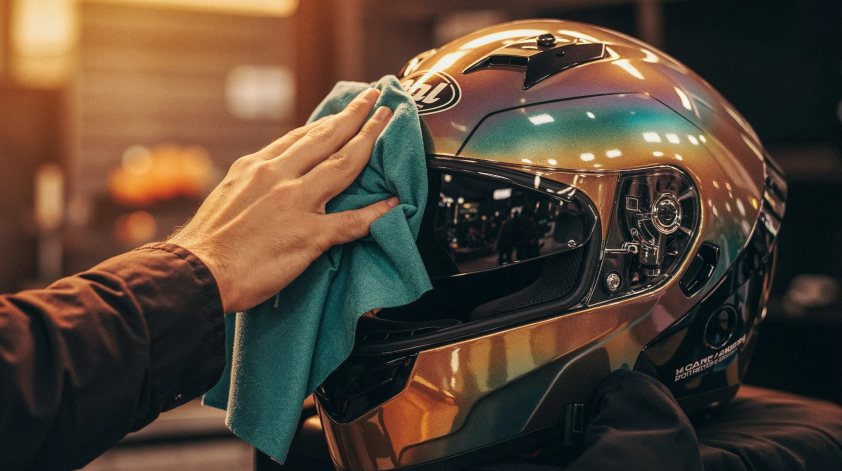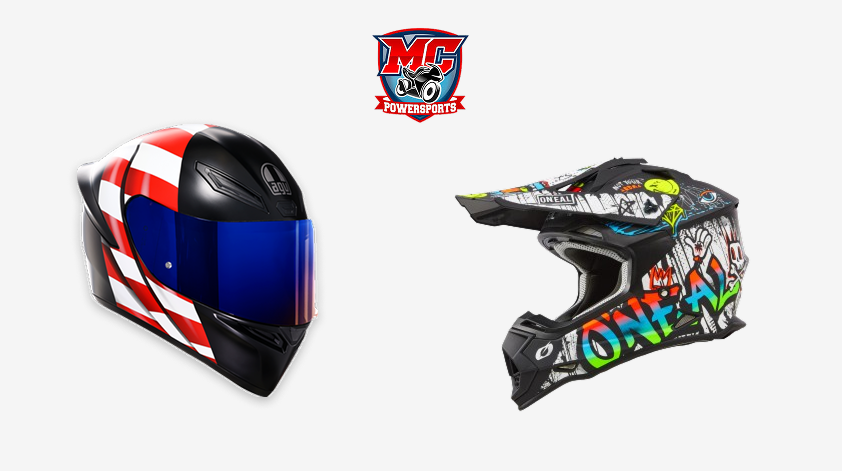When to Replace Your Motorcycle Helmet and Why It Matters
Posted by undefined
The helmet you wear is, indeed, the most important piece of motorcycle riding gear out there, and all riders will universally agree with that statement. However, similar to any other product in existence, it has a shelf life. After protecting ride after ride, helmets start to give in and must be put to rest. As a rider, it is your responsibility to look for signs of wear and tear and know when the time to replace your motorcycle helmet has come. In this blog, we will lay out how you can determine if your helmet needs a replacement.
Why Should You Replace a Helmet?
Motorcycle helmets aren’t built to last forever; they’re built to protect you. Think of them as airbags in a car. Once the bags open up, they need to be replaced. Helmets are somewhat similar in that regard. If a rider has been involved in an accident, and the helmet has taken damage and protected the rider, it is time to replace it.
Why? Because of the impact, even if visually the helmet appears fine, it has damaged the insides of the helmet, and it is no longer able to absorb shock to the same extent. This lures the rider into a false sense of security, and thus, you must replace your helmet.
- You should replace your helmet after a motorcycle crash.
- As per manufacturers, replace your helmet every 3 years of heavy use.
- Replace your helmet after 5 years of medium-to-low usage.

Construction of a Helmet
To put it in a nutshell, a helmet is made of three main parts:
- The Outer Shell: Often made from polycarbonate, fiberglass, or carbon fiber. This hard layer spreads out the force of an impact.
- Impact-Absorbing Liner: Made from, generally speaking, typically expanded polystyrene (EPS) foam that cushions the head by absorbing energy.
- Comfort Padding and Fit System: These cushions impact as well as make the helmet comfortable to wear and fit snugly. It contains soft foam and layers of fabric.
Some helmets also have extra features like ventilation channels, visors, or rotational impact protection systems (MIPS) for added safety. Furthermore, the choice between an open face vs full face helmet is also one to make as a rider.
Universally accepted advice on this matter is: open-face helmets are fine for daily commutes but for highway or high-speed riding, full-face helmets should always be preferred.
Signs It Is Time to Replace Your Motorcycle Helmet
A helmet, once it loses its ability to protect the rider, must be replaced. Here are the warning signs:
1. Visual Damage
Scratches are common, but dents or deep cracks are causes for concern as they indicate a damaged exterior shell or inner foam. These may not always be obvious signs of heavy damage, but they do indicate compromised structural integrity.
2. Improper Fit
Just because a helmet is in perfect condition doesn’t mean it is right for you. A helmet should fit just right. The fit should be snug, not too tight but not loose either.
3. Chin Strap Matters
The chin strap must be in proper condition, no loose threads or buckles that don’t fix into place. Motorcycle helmets with a weak chin strap can fly off on impact, rendering them, for all practical purposes, useless.
4. Damaged Visor
This doesn’t always require a full helmet replacement, as you can simply replace the visor, but you must act on it. The visor not only protects the rider from debris but also from flying rocks and the elements. If the visor is cracked, the face and eyes are left vulnerable, not to mention it impedes vision.

Maintenance Tips: Increasing Your Helmet’s Lifespan
Just like any other product, if you care for them, motorcycle helmets last longer. To get the best experience and the most out of your motorcycle riding gear, do the following:
- Cleaning your helmet should be non-negotiable. Use appropriate cleaners for both the interior and exterior of the helmet. Let it air dry, and do not use any heat sources to speed up the process, as they can damage the structure.
- Make it a habit to check for wear and tear regularly. Minor scratches are fine, but cracks, loose padding, improper fit, frayed chin straps, and similar issues demand attention.
- While a helmet is meant to absorb damage, treat it gently when possible. Avoid bumping it into objects, dropping it, or placing heavy items on top of it.
- Storage matters. Ideally, the helmet should be kept in a cool, dry place away from sunlight. UV rays can damage it and cause premature aging. Most helmets come with a helmet bag, and it should be used.
Conclusion
Motorcycle helmets, just like the components of a motorcycle, undergo wear and tear. You can maintain them to the best of your abilities, and you should, but there comes a time when they must be replaced. When the signs we listed above start to show, such as cracks, heavy dents, after an accident, or after 3–5 years of usage, it is time to bid farewell and replace it. Remember, the importance of proper riding gear cannot be understated.
Frequently Asked Questions
Can I Paint or Customize My Helmet?
Yes, but only with approved paints and methods, as some chemicals can weaken the shell.
Do Helmets Expire Even if Unused?
Yes. Materials degrade over time, so replace them after about 5 years, even if they look new. At that point, it is best to purchase a new helmet. Check out MC Powersports’ helmet collection now!
Is It Safe to Buy a Used Helmet?
No. You cannot verify its crash history or hidden damage. It is best to purchase a new helmet from a trusted provider such as MC Powersports.

